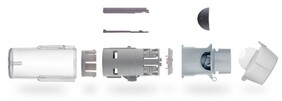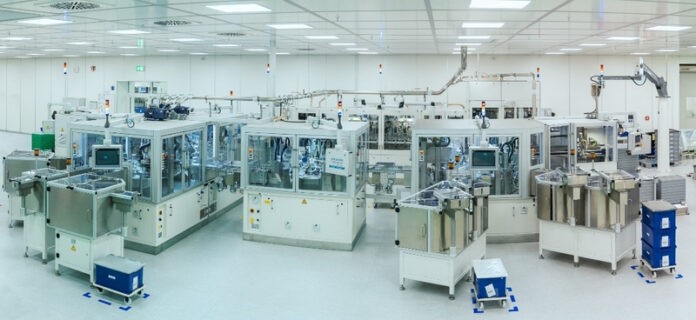Gerresheimer has been commissioned by Boehringer Ingelheim to develop and mass-produce the new generation of respimat inhalers. The environment-friendly successor model of the established Respimat inhaler can be fitted with up to six active ingredient cartridges in succession, resulting in less waste and a significantly reduced carbon footprint throughout the product life cycle. Gerresheimer developed the housing assembly for the new inhaler and built the pre-series and series tools and the pre- and series automatic machines. Gerresheimer also conducts large-scale production.

The respimat is a well-established inhaler for the treatment of respiratory diseases. Patients with chronic lung conditions such as COPD use daily bronchodilative medicines to alleviate their disease. The inhalers’ consumption is correspondingly high, which usually has to be replaced after the active substance has been used up. Boehringer Ingelheim has therefore decided to develop a new, reusable version of the Respimat. The further development of the inhaler takes into account the feedback of patients. Thus, in the ergonomics of the respimat, the grip was improved by an extension of the housing, and the readability of the dose display was facilitated.

The main challenge with product development and industrialization was the fact that the new inhaler should be available in large quantities immediately upon its market launch. Gerresheimer, therefore, had to transfer directly from the development phase to robust high-volume series production. The development phase and the creation of equipment for large-scale production were pushed forward in parallel to cope with the tight schedule. First, low-occupied tools and semi-automated processes were used to lay the foundations, which could immediately begin developing high-staffed tools and fully automated processes for high-volume mass production. In this way, the development of the series equipment could be started ten months before completing the design qualification. The availability of our cleanroom production for small series, with which samples could be tested promptly under real conditions, was also decisive for the project’s success.
A risk-based approach was used to jump into large-scale production, ensuring systematic control of all manufacturing process risks. Due to this robust development approach, all functional tests were passed immediately during the design qualification of the low-occupied tools and later in implementing the high-occupied series tools. High-volume series production has also been running smoothly for several months now.








